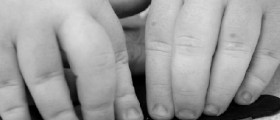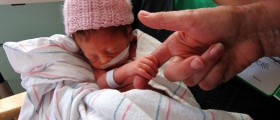
Dyspraxia and the main types
Dyspraxia is a term which is used for a neurological developmental disability, which is congenital and which can manifest through oral, verbal or motor dyspraxia. In cases of oral dyspraxia, the person cannot really perform blowing or sucking, for example, although there are cases in which the person cannot even move the tongue or lips, which further affects swallowing and speech. In cases of verbal dyspraxia, the movements that are necessary in order to produce speech sounds are affected, which is why these people will probably have unintelligible speech, their expressive language will be delayed and they will simplify words. As for motor dyspraxia, it manifests through problems in planning movements that are necessary for performing certain skills in the correct way. These people cannot learn new skills easily; they have problems with coordination, handwriting and quick responding, as well as with solving problems and analyzing things. The disorder in question has nothing to do with the intelligence of the person, even though social skills and the behavior of the person in question are usually significantly affected in a negative way.
Therapy for dyspraxia
Even though this disorder cannot be cured, there are ways to improve the child’s ability to function. For this improvement to be faster and better, it is important to diagnose the problem as early as possible. Since even a pediatrician can set the diagnosis, the parent should take the child as soon as the first suspicious symptoms are noticed. However, since it is not always easy to recognize this condition, the parent should provide all the necessary information regarding the child’s intellectual ability, as well as gross and fine motor skills.
As for the therapy, it usually involves occupational therapist, and speech and language therapist. The occupational therapists need to observe the functioning of the child at home and at school before they engage themselves in helping the child to improve or develop those skills that he or she finds troublesome. The role of the speech and language therapist is to asses the child’s speech and to improve its communication and make it more effective. Another important part of the therapy is also perceptual motor training and it consists of tasks that have the aim to stimulate the child to improve gradually and in a way that is not stressful or frustrating.
Neuro developmental therapy might also be suggested, and it is usually used along with Tomatis method of sound therapy.

















Your thoughts on this
Loading...